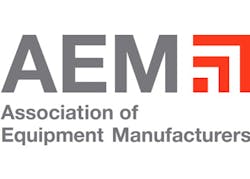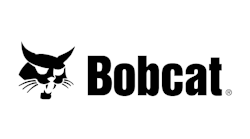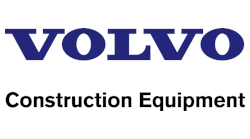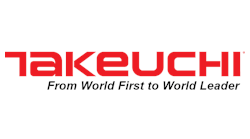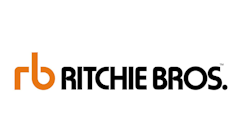In an effort to highlight a long-time contributor to equipment manufacturing industry product safety and compliance, AEM recently sat down with Steve Neva, International Standards and Regulations Manager at Doosan Bobcat.
Neva spoke about how he got into the equipment manufacturing industry, his roles and responsibilities at Doosan Bobcat, his work developing industry standards, and much more.
AEM: Can you give me a little background about how you got into the industry and, eventually, to your current role as international standards and regulations manager?
Neva: I grew up on a family farm in North Dakota, and my Dad and brothers are still active on that farm today. I graduated with a BS in agricultural engineering from North Dakota State University in Fargo. After graduation, I moved to Indiana and worked for Cummins Engine Company for about three-and-a-half years as a Service Engineer.
I always tell people they should start their career in a role similar to that of a service engineer because it really allows you to view things through the eyes of the customer. And I’d like to think every decision I’ve made over the course of my career is one where I’ve kept that in mind.
Eventually, I moved back to North Dakota in 1989 and went to work for Melroe Company, the predecessor to Doosan Bobcat. I was wanting to get back closer to home, so I settled in Bismarck working in a role as a manufacturing engineer. Then someone in the company’s sourcing department called and asked me if I was interested in moving to another location in Gwinner, North Dakota, where I would work in sourcing. Always looking to learn more and take on new opportunities, I ended up taking that job.
Since I previously worked at an engine company in Cummins Engine Company, I was given the responsibility of sourcing all of Doosan Bobcat's engines.
After 10 years of sourcing at Melroe Company, which during that time became a business unit of Ingersoll Rand, I took a role within Ingersoll Rand as their director of engine sourcing. In that role, I worked with all of Ingersoll Rand’s businesses on their engine sourcing. And really, it’s in that role where I started to get involved in regulatory affairs during the development of the US EPA Tier 4 rules. I worked with EMI’s (an AEM predecessor) engine emissions committee, eventually becoming the chair of that committee. And that’s how I was involved – both through our company and working with AEM – on commenting on the EPA Tier 4 engine rule. Even today, I still remain involved with engine emissions.
And when they were looking to hire someone at Doosan Bobcat, to work on standards and regulations, they eventually came and searched me out – because of my familiarity with regulations. That was 2004, so I’ve been doing standards and regulations for quite a while.
AEM: What does your current role at Doosan Bobcat entail? What are some of your duties and things that you’re involved in on a day-to-day basis?
Neva: As I mentioned, part of my role involves emissions. I managed our flex programs for the EPA Tier 4 implementation and the previous stages in Europe. But I also have been heavily involved in the world of standards development – covering both safety and commercial areas of standardization primarily for earth-moving machinery.
My job, up until the COVID-19 pandemic, involved traveling pretty extensively. A few years back, I found my interview notes from when they were interviewing me for this role. My boss at the time, one of his comments was “You’ll probably travel internationally one or two times a year.” One of the things in my mind was wanting to travel less. Now it’s funny to look back on because there have been a few years where I traveled more than 150 days a year.
When I started in my role, it was one of the first times someone at my company was hired to do what I do. So, I got to make up the position as I went along. And that’s been great, because it’s allowed to me to always do what I think is right, and my company has fully supported me.
AEM: What about the work you do now do you really appreciate or value, and really makes you understand why you ended up in your current role and do the current work you do?
Neva: There are always different standards to work on, and it’s a wide variety of things that we cover. Whether it’s terminology standards for different pieces of equipment, to rollover protective structure standards, to functional safety and collision avoidance, there’s such a wide variety of areas and topics that I’m exposed to, and I have to learn about them all.
When I started 16 years ago in this role, what we were working on then is a lot different than what we see in the world today. In the past, we used to say standards kind of defined the state of the art. They didn’t develop it. They just documented what it was. But today, with collision awareness and avoidance and some of the other autonomous standards out there, we definitely are on the cutting edge.
There are things that haven’t been truly developed, and there is no norm out there. We’re trying to establish that norm, in many cases.
AEM: With all of that in mind, what would you see – in your opinion – is the value behind the work you do?
Neva: I guess it goes back to the customer. It gives him or her consistency. Whether it’s safety, operational controls, or how things work, we’re trying to bring consistency into it. Not being the same as there are always product differentiators, but consistency.
From a personal standpoint, one of my talents is that I can listen to other people’s side of the issue and understand it. It’s surprising how often we agree on things that we’re just coming at from different angles. I think that’s one of the things I help get out for people to see, we’re not really talking about different things or all that far off from one another.
AEM: If you could give one piece of advice to someone entering the industry, what would it be?
Neva: Be involved. I’m fortunate my company has allowed me to be involved in the development of a lot of standards, and there were resources that allowed me to travel to meetings. Because, if you’re not there and not participating, it’s hard to understand all of the work that goes into it.
The other thing is, listen. Don’t be afraid to ask, but you truly have to listen. Don’t come in with preconceived notions or be bullheaded, and be sure to listen to other people’s positions.
AEM: What are you looking forward to the most about continuing on in the industry?
Neva: Where I’m at today, I guess one of my goals is to mentor the newer people in this role so that they continue to be successful. Not only in their own career but in continuing the work we’ve done in the past and building on our successes to ensure a bright future for our industry – and for our customers.
Subscribe to our AEM newsletters for more safety and technical updates.
